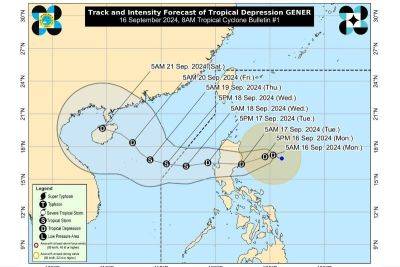A 3-foot asteroid fireball burns up over the Philippines amid typhoon Yahi
On the afternoon of September 4th, an asteroid approximately 1 meter (3 feet) in diameter disintegrated in Earth’s atmosphere over Luzon Island in the Philippines, as reported by NASA. The European Space Agency (ESA) pinpointed the impact time at 4:39 p.m. UTC.
This asteroid, named 2024 RW1, was detected by the Catalina Sky Survey earlier yesterday morning.
It streaked across the sky above the northernmost island of the Philippine archipelago at an astonishing speed of 17.6 kilometers per second (63,360 kilometers per hour) before burning up, according to NewScientist.
Asteroids of this size, around 1 meter, are estimated to collide with Earth roughly every two weeks, though they are seldom observed before impact, as noted by the space agency. NASA assured that the asteroid would “harmlessly impact Earth’s atmosphere” and produce a fireball visible off the east coast of the northern Philippines.
Spectacular video footage shared on X captured the moment the asteroid blazed through the sky over the Philippines. Dr. Robin George Andrews tweeted, “Woah! Newly discovered 1-1.5m asteroid 2024 RW1 (spotted by near-Earth asteroid hunters in the US) burns up above the Philippines just hours after it was first seen. This asteroid wasn’t a risk. But if it was, a duck-and-cover warning was possible.”
Jacqueline Fazekas, a researcher with the NASA-funded Catalina Sky Survey near Tucson, Arizona, discovered the asteroid, initially designated CAQTDL2. The ESA highlighted the rarity of such events, tweeting, “This is just the ninth asteroid that humankind has ever spotted before impact.”
The asteroid, being small enough to disintegrate upon entering Earth's atmosphere, posed no threat. Enthusiastic sky-gazers in the vicinity shared videos on social media, capturing the breathtaking fireball.
Despite the excitement, viewing conditions were less than ideal due to the cloud cover from Typhoon Yahi. This storm, which has been affecting the northern Philippines as a tropical storm for several days, has now intensified to the equivalent of a Category 3 hurricane and is situated approximately 250 miles west of Luzon Island, as reported by CNN.
According to recent advancements in planetary







